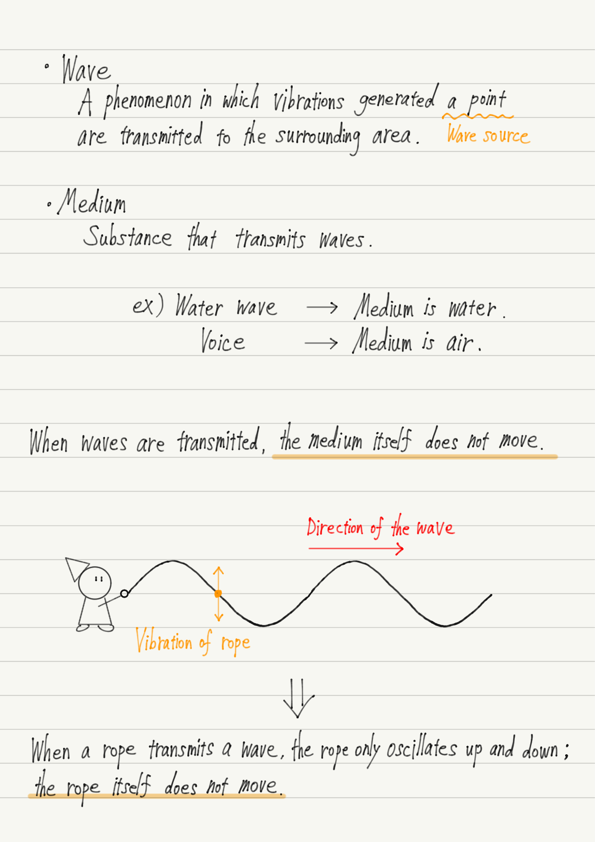Wave and Medium
From here on, we will study the field of waves.
When we hear the word “wave,” many people think of ocean waves lapping on a beach.
On the other hand, you must know from your previous studies that sound and light are also a kind of wave.
What does “wave” mean in physics?
Let’s start with the definition of a wave!
Definition of Wave
In physics, “wave” is a phenomenon in which vibrations occurring at a certain point are transmitted to the surrounding area.
The point where the vibration first occurs is called the wave source, and the substance that transmits the vibration to the surroundings is called medium.
(Without a medium, waves cannot be transmitted even if the wave source vibrates.)
Let us take the human voice as an example.
A person produces voice by shaking the vocal cords, and the voice spreads through the air to the surroundings.
Therefore, in this case, the wave source = vocal cords and the medium = air.
In the case of an earthquake, the wave source = the epicenter and the medium = the ground.
Properties of Medium
Now, let’s try an experiment.
Place the palm of your hand over your mouth and speak out as you do.
If you actually do it, your breath should hardly be on your palms.
This means that when you speak through your mouth, the air in your mouth does not go out.
In breathing, air goes in and out, but not in vocalization.
We can see that although air carries sound, air does not move with the sound.
This is not limited to sound, but is a property common to all waves.
Waves travel through a medium, but the medium itself does not.
Make sure you understand this fact!
Summary of this lecture
Next Time
We’ll continue our discussion of wave terminology next lecture.


